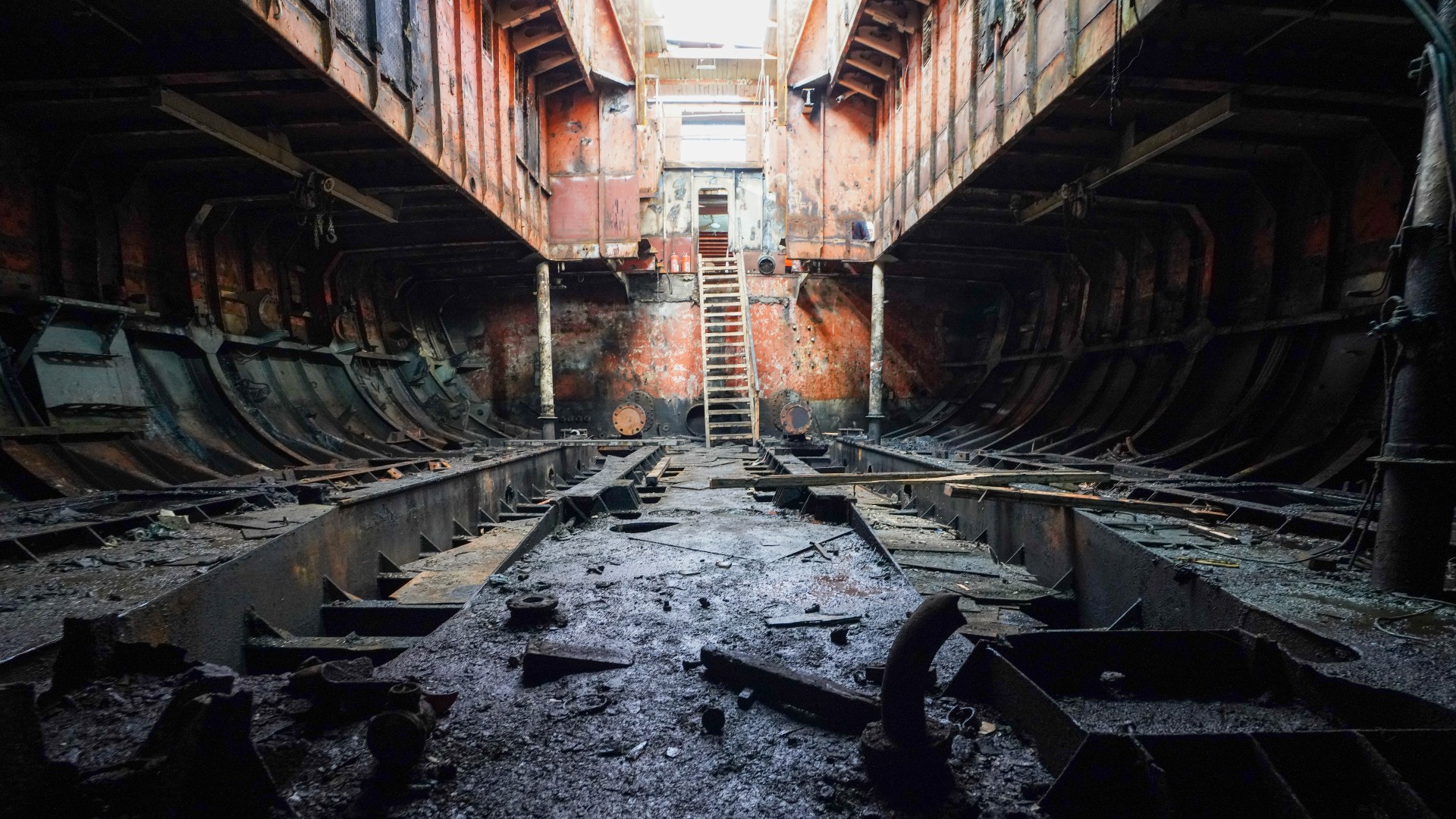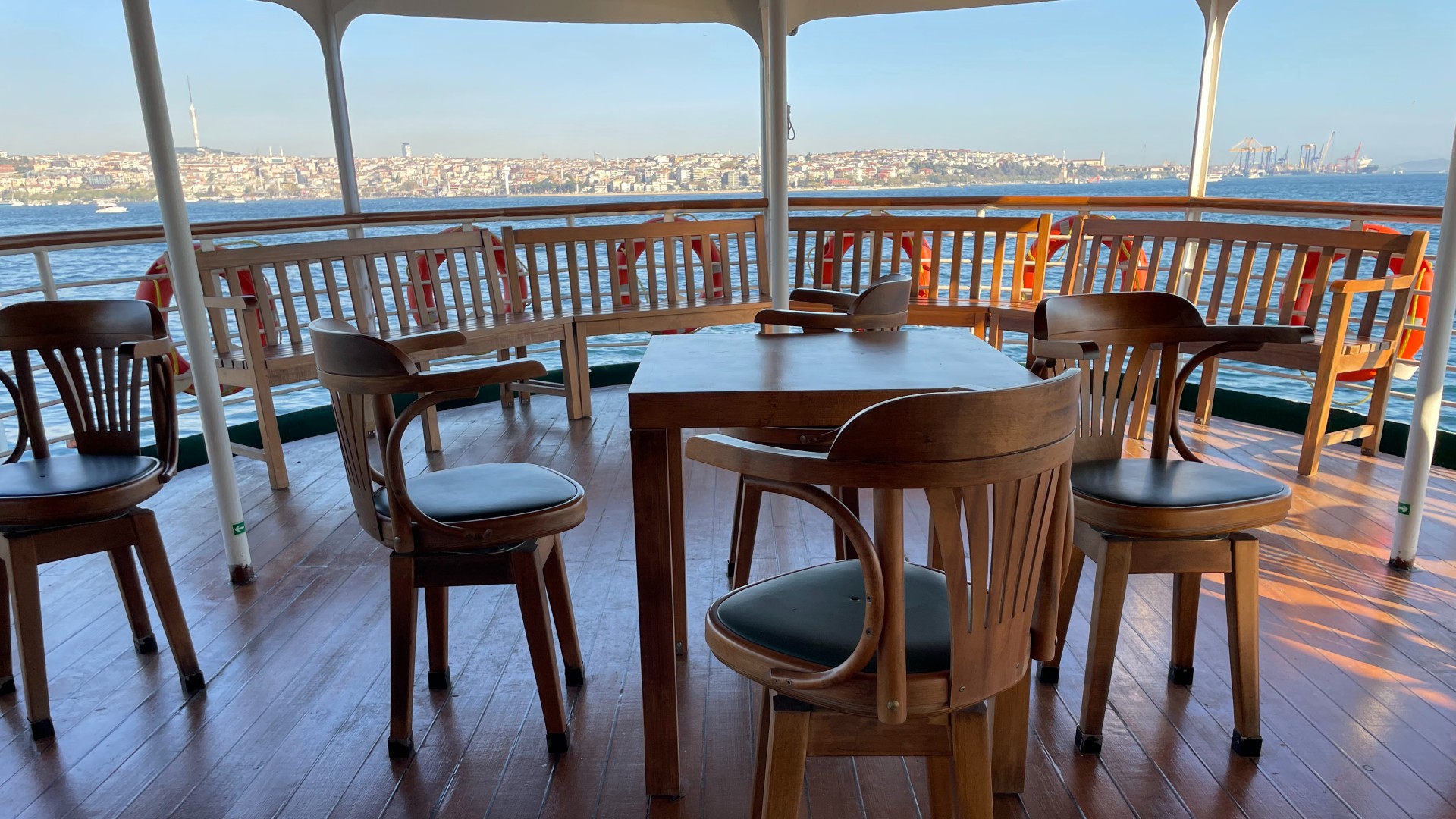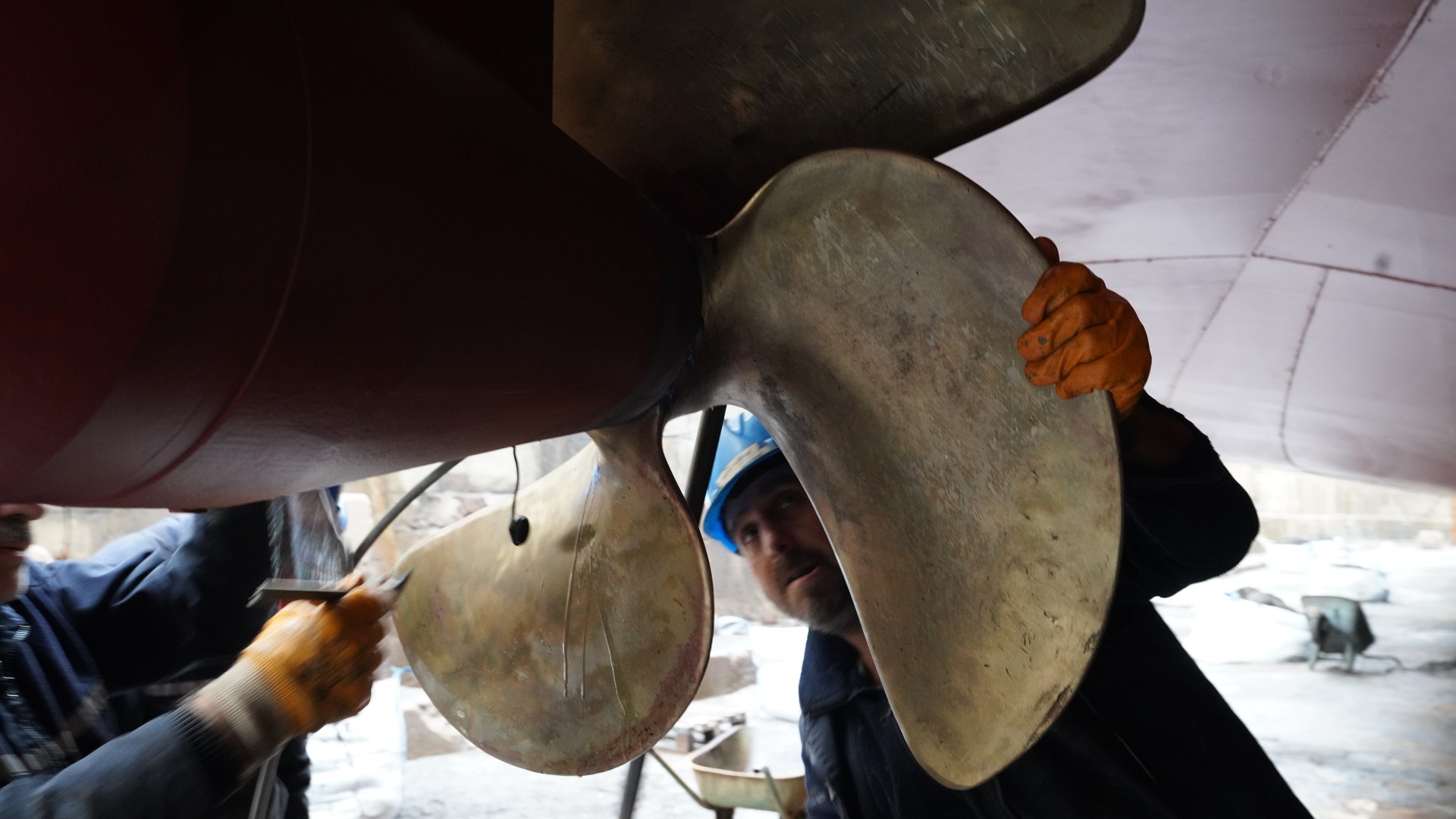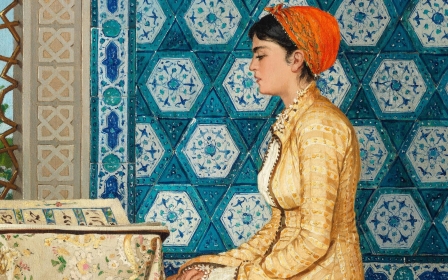How the restoration of iconic Istanbul ferry revived memories of the past
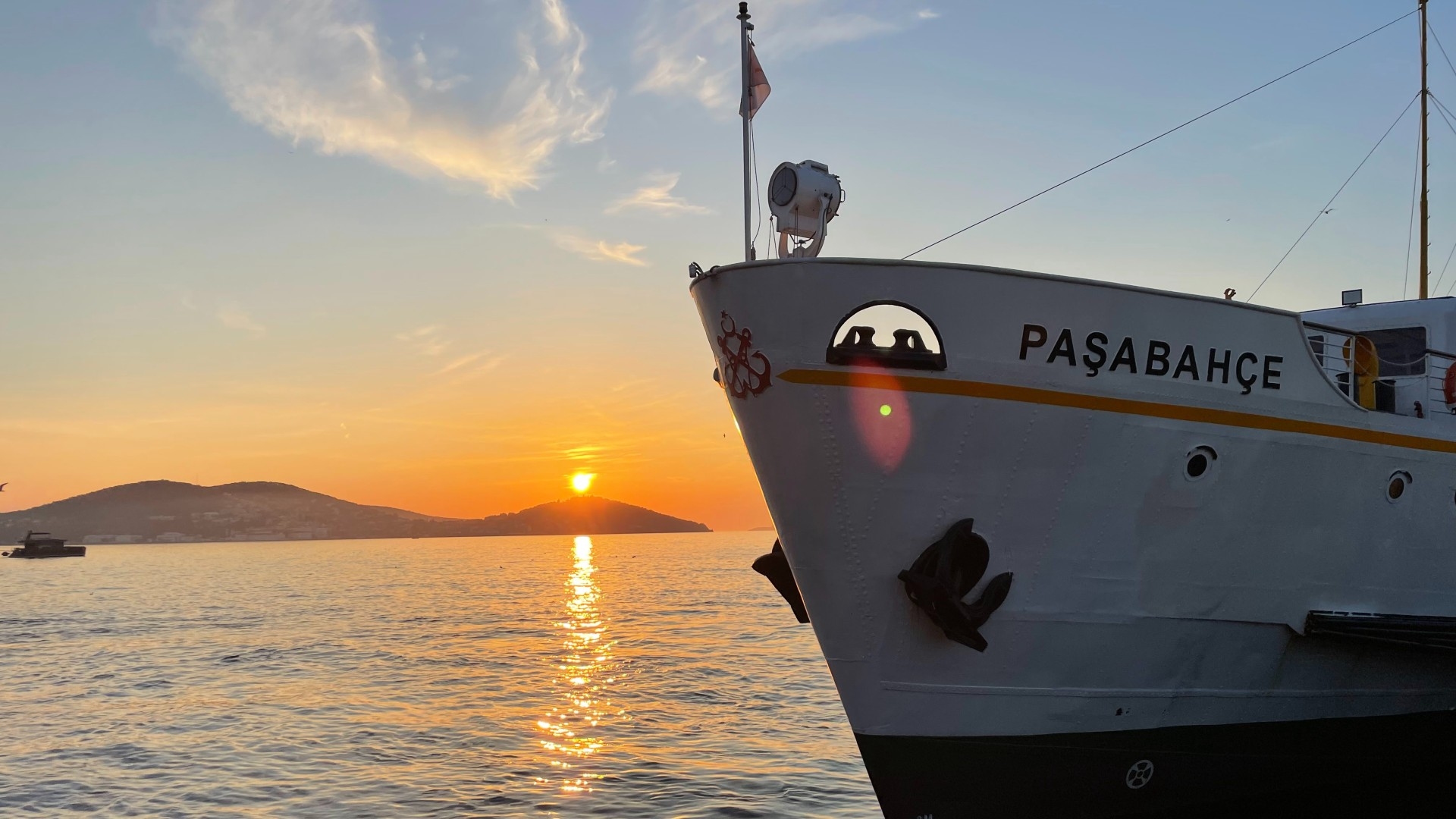
It was a bright and balmy spring sunset aboard the Pasabahce ferry as it cruised through the Bosphorus Strait off the coast of Istanbul.
Passengers and commuters heading to their homes on the Princes’ Islands sat on stand-alone chairs on the sweeping back deck. They caught up with one another, chatted about the day’s news, gossiped, and looked over at the gridlocked, rush-hour traffic on land.
Istanbul has a long relationship with water and it has for decades been one of the ways locals prefer to commute, avoid traffic and get around easily.
However, the Pasabahce ferry has a particularly special place in people’s hearts, and there are many fascinating chapters in its storied career.
The ferry was built in the port city of Taranto, Italy, in 1952. Although originally intended to be a warship, it was quickly converted into a passenger ferry.
New MEE newsletter: Jerusalem Dispatch
Sign up to get the latest insights and analysis on Israel-Palestine, alongside Turkey Unpacked and other MEE newsletters
While it is large and grand and carries thousands of people every day, it is also one of the fastest ferries in the fleet and was brought back from the dead in late 2022 after a two-year restoration.
Bringing people together
For around 58 years, the ferry would make the daily journey transporting people between the two sides of the Bosphorus. It soon became intrinsic to the city’s culture and a key part of many people’s lives.
Originally, the ferry oozed luxury and was part of a trio of liners with long tables, olive green wicker chairs, and a bar.
Today, it is the only one that remains; the Dolmabahce ferry was dismantled in the early 1990s, and the Fenerbahce is moored to a transportation museum on Istanbul’s Golden Horn estuary.
For locals, there is a strong sense of nostalgia attached to the ferry and its role in Istanbul.
Poems and songs were composed on the ship, and a baby was once born on board.
The city’s Nobel laureate Orhan Pamuk once wrote: “Pasabahce is almost like my own life. We came to Istanbul in the same year. It is my age. It is my ferry.”
Today, the old-world air of comfort and class remains.
On board, in a black tie, Captain Ilker Cetin stood speaking to some of the passengers before he invited MEE back to his wheelhouse for tea.
“It was packed,” he explains, as his seven-person crew enjoys some respite following a very busy period throughout the Muslim celebration of Eid, where public transport is free for passengers.
For Cetin, captaining the ship is a family affair. His great-grandfather was a navy captain under Turkey’s founding father, Mustafa Kemal Ataturk, and his grandfather was the chief engineer of Istanbul’s ferries.
“Previous captains still call to check up on me - well actually check on the ship - and make sure everything is in order,” he says, adding that navigating the Bosphorus is not as easy as it may look.
It is one of the busiest maritime channels in the world, connecting the Black and Marmara seas, and is also often swathed in dense fog, there are strong currents and even runaway sea mines.
Residents of the Princes’ Islands recognise the ship by the sound of its steam whistle alone, which has become a significant part of their lives.
The ship’s cafe stays open long after it docks in order to allow time for socialising.
“People from the islands see this as their home. It continues to collect their memories,” says Cetin.
‘Carrying culture, not just passengers’
But after almost 60 years of service, the ship had become neglected, and people started toying with the idea of turning it into a museum. For a short while, the ship even became a wedding venue.
However, after it had sat idle for close to a decade, Adil Bali, a local writer, and author of the book Istanbul with Ferries, decided to bring the iconic liner back to life.
Bali, born in Buyukada, started a "Save the Pasabahce" petition to rescue the scrapped ship.
This attracted tens of thousands of signatures and as a result, the Istanbul municipality stepped in after “listening to my efforts and the voice of the citizens to save the ship,” he told Middle East Eye.
The municipality decided to renovate the Pasabahce and brought it to the Halic shipyards, one of the oldest working shipyards in the world.
Following its renovation, the ship set sail again last autumn on its 70th birthday.
“Istanbulites spent a few hours a day on these ferries," says Bali.
"The ship was carrying a culture, not just passengers,” he says, by way of explaining why the campaign had so much appeal.
“There was a great cultural life inside the ferries. They were living spaces where life flowed.”
'There was a great cultural life inside the ferries. They were living spaces where life flowed'
- Adil Bali, Istanbul writer
Bali believes the revival of the Pasabahce has helped locals regain an important symbol of Istanbul, and many still have memories of the original ship prior to its restoration.
“The waiter knew I drank vodka cherry and they would serve it to me as soon as I came on board,” Havim Ancel, a regular passenger, told MEE, describing how the bartender always remembered his order.
Like Ancel, many passengers have fond memories of the ship sailing through the sea. They are happy to see it in action once again - particularly as sea transportation has declined since the city’s population moved away from the coast, and rail systems and tunnels have been developed to cater to a population that has grown enormously over the last 50 years.
“The restoration of Pasabahce means more than just saving a ship and the growth of our fleet. It also means protecting the maritime culture, the memories of the citizens, and a precious Istanbul value,” says Sinem Dedetas, the general manager of Istanbul municipality’s Sehir Hatlari, which manages the city’s 85-vehicle sea fleet.
In an effort to restore and expand the number of vessels in its fleet, the municipality has also introduced a number of electric-hybrid sea taxis that operate around the clock.
“The return of the Pasabahce is a return to the sea,” says Dedetas.
Middle East Eye delivers independent and unrivalled coverage and analysis of the Middle East, North Africa and beyond. To learn more about republishing this content and the associated fees, please fill out this form. More about MEE can be found here.


